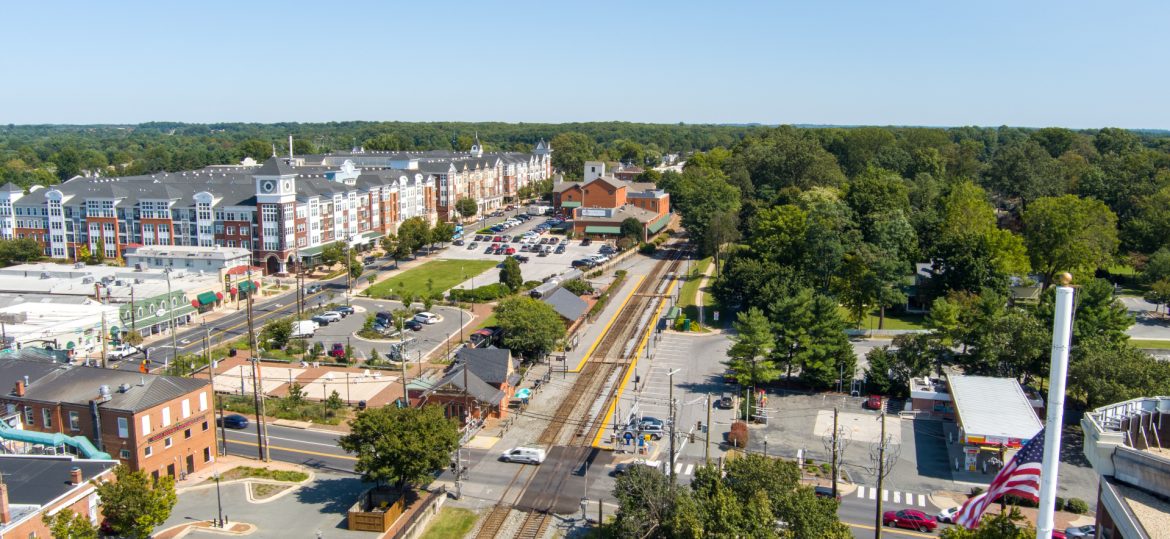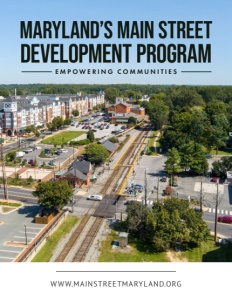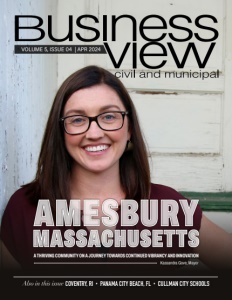Maryland’s Main Street Development Program
Empowering Communities: Inside Maryland’s Main Street Development Program
Revitalization efforts are paying off in a focused housing strategy
In 1998, the Main Street Maryland Program embarked on a journey to breathe new life into the state’s historic downtowns and neighborhoods. As the state coordinating program for the National Main Street Center, a National Trust for Historic Preservation subsidiary, Main Street Maryland has emerged as a cornerstone of community development and revitalization efforts statewide.
What began with just three communities has blossomed into a statewide initiative spanning over 50 communities, representing some of Maryland’s strongest and most resilient business districts. Housed within the Maryland Department of Housing and Community Development, Main Street, Maryland, stands as a potential for communities striving to preserve their heritage while fostering economic growth.
Designated Main Street Maryland communities have steadfastly committed to enhancing their traditional downtown business districts’ economy, appearance, and image. Christine McPherson, Assistant Director of Community & Economic Development Partnerships, offers valuable insights into the Main Street Maryland program’s inner workings and impact on communities statewide.
Community development
McPherson emphasizes that “the program serves as the key catalyst for community development and the revitalization of Maryland’s historic downtowns.”
However, as with any ambitious undertaking, challenges are sure to arise. McPherson illuminates the primary hurdles these communities face in economic development, which mirror those encountered nationwide. “Filling vacant storefronts, assisting small businesses in transitioning to an online presence, and cultivating a loyal customer and visitor base are among the foremost challenges,” she explains.
Vacant storefronts detract from these areas’ visual appeal and signify lost economic potential and community vibrancy. Furthermore, the shift towards online commerce presents a unique set of obstacles for small businesses rooted in traditional brick-and-mortar establishments.
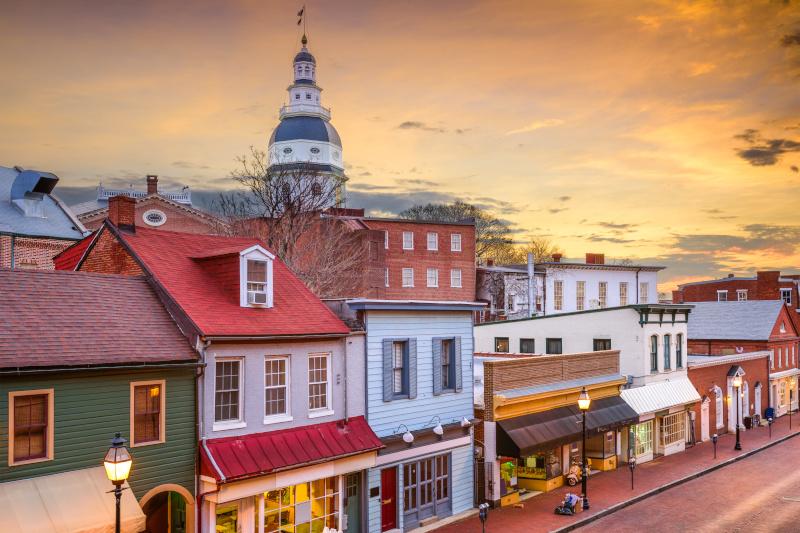
Leveraging resources
“In response to these challenges, the Department of Housing and Community Development has allocated substantial resources,” McPherson continues, “Over the past two years, we’ve deployed over $40 million in funds to support small business growth and expansion in Main Street communities statewide.”
These funds are not merely monetary; they represent a lifeline for communities striving to navigate the complexities of modern economic landscapes while preserving the heart of their historic districts. Both state and national programs offer an excess of resources and training to local Main Street managers, equipping them with the tools necessary to navigate the shifting economic landscape and bolster the vitality of their respective districts.
As McPherson outlines, the Main Street Maryland program features diverse initiatives and thrives on strategic partnerships that amplify its impact. “We have a portfolio of operating and capital programs to support these initiatives,” McPherson notes.
Strategic partnerships play a huge role in the program’s success, with collaboration extending beyond the Department of Housing and Community Development to encompass various state agencies and organizations. The symbiotic relationship with entities such as the Department of Commerce, which houses tourism—a crucial component complementing Main Street communities, is emphasized. Additionally, partnerships with state highways are essential because many Main Streets fall within state highway rights-of-way.
The program’s affiliation with the National Main Street Center adds another layer of collaboration, enabling access to resources and expertise on a broader scale. Locally, organizations like the Maryland Economic Development Association (META) and Preservation Maryland serve as invaluable partners, further enriching the program’s reach and effectiveness.
McPherson highlights a particularly noteworthy partnership with the Baltimore City Main Streets program. “Baltimore City runs several Main Street communities, totaling eight or nine, within its jurisdiction,” she explains. “Given Baltimore City’s pivotal role in our state, we collaborate closely with them to support these communities.”
Milestones and achievements
Transitioning from partnerships to tangible outcomes, McPherson passionately delves into the program’s 25-year journey, eager to share the impactful stories and notable achievements that have characterized its evolution. “Last year marked a significant milestone for us as we celebrated our 25th anniversary, signifying a quarter-century of dedicated efforts and transformative initiatives.”
Throughout its illustrious history, the program has catalyzed over $1 billion in public and private investments, paving the way for developing more than 4,000 new small businesses statewide. These businesses, in turn, have given back to Main Street districts across the region, breathing new life into once-neglected areas and fostering lively communities.
But the program’s impact extends far beyond mere economic figures. McPherson emphasizes the role played by volunteers, whose time and dedication have translated into nearly a million volunteer hours over the past 25 years. This commitment, valued at $29 million, underscores the deep-rooted sense of community spirit that defines the program’s success.
Tourism and social benefits
Drawing from Maryland’s tourism economy’s rebound from the challenges posed by the COVID-19 pandemic, Main Street, Maryland, is primed for a strong year ahead. With nearly $19.4 billion in customer spending in 2022, the state’s tourism sector reflects a promising trajectory, setting the stage for vibrant Main Street communities to thrive.
“Main Street Maryland communities rely heavily on customers that focus their spending locally and visitors looking for one-of-a-kind experiences,” McPherson emphasizes. “With Maryland Tourism’s economic impact data showing a rebound from COVID, we are optimistic that this coming year will be strong for Main Street.”
Outdoor enthusiasts flock to the Main Street communities, drawn by the promise of unparalleled recreational opportunities. From fishing in serene bay waters to hunting in expansive forests teeming with wildlife, there’s no shortage of ways to commune with nature in Maryland’s Main Street towns. Miles of pristine trails beckon hikers and bikers to explore the state’s natural beauty. At the same time, kayakers and paddleboarders glide along tranquil waterways, soaking in the sights and sounds of the Chesapeake Bay region.
These unique features converge to create immersive visitor experiences that leave a lasting impression on all who venture into Maryland’s Main Street communities.
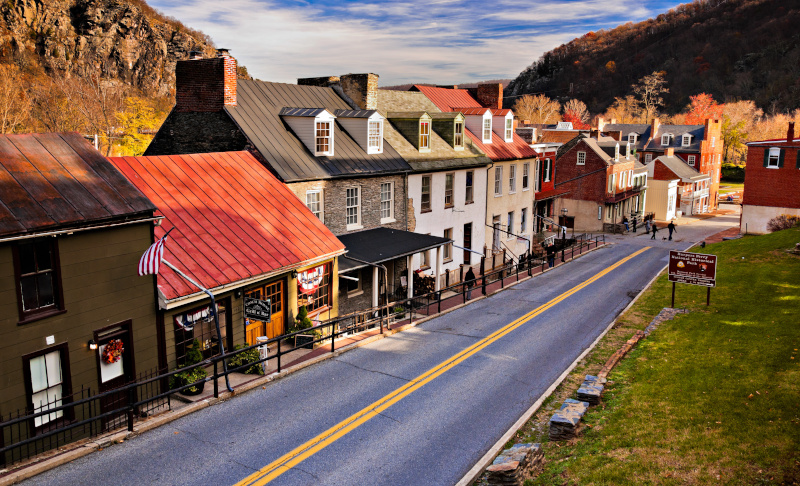
(C) 2011 JOHN BILOUS
The Main Street approach
In adapting its approach to address the diverse needs and characteristics of communities across Maryland, Main Street Maryland adheres to a time-tested model known as the Main Street Approach. Developed by the National Main Street Center, this framework encompasses four pillars of work: design, promotions, economic vitality, and organization.
“Each pillar plays a crucial role in guiding community revitalization efforts,” McPherson explains. “From enhancing the visual appeal of Main Street districts to promoting individual businesses and fostering economic development, the Main Street Approach provides a structured framework for communities to achieve their goals.”
Central to this approach is the engagement of stakeholders within each community, empowering them to shape the vision and strategy for revitalization efforts. By leveraging local expertise and adopting collaboration, Main Street Maryland ensures that initiatives are tailored to each community’s unique needs and aspirations.
Measuring success, metrics, and indicators
Measuring impact and effectiveness is paramount to evaluating the success of Main Street Maryland’s initiatives. McPherson highlights various metrics to assess the program’s impact, including public and private investment, business openings and closures, job creation, and volunteer engagement.
“Tracking these metrics allows us to gauge the tangible outcomes of our efforts and identify areas for improvement,” McPherson remarks. “By leveraging data-driven insights, we can refine our strategies and ensure that Main Street communities continue to thrive and evolve.”
Shaping the future
Main Street Maryland is committed to nurturing communities that honor Maryland’s heritage and fuel economic growth. Through collaboration, innovation, and tangible results, Main Street, Maryland, is positioned to shape the future of downtowns and neighborhoods across the state for generations.
Above all, McPherson calls upon citizens and visitors to engage with their local Main Street communities. Supporting small businesses and prioritizing local spending are highlighted as crucial, as these businesses are vital in fueling community initiatives, such as youth sports programs.
Furthermore, McPherson encourages others to plan trips to explore the diverse experiences of Maryland’s Main Street communities. From the breathtaking beauty of Western Maryland’s mountains to the abundance of historical and cultural landmarks statewide, Maryland offers a wealth of attractions waiting to be uncovered.
“Investing time and resources in experiencing what our state has to offer not only enriches our own lives but also contributes to the vitality of Main Street communities,” McPherson concludes. “By immersing ourselves in local experiences and supporting small businesses, we become active participants in the ongoing revitalization efforts.”
AT A GLANCE
Maryland’s Main Street Development Program
What: A statewide program revitalizing Maryland’s historic downtown districts and neighborhoods, strengthening economic potential, and fostering community development.
Where: Over 50 state-designated Main Street Maryland communities.
Website: https://mainstreetmaryland.org/
